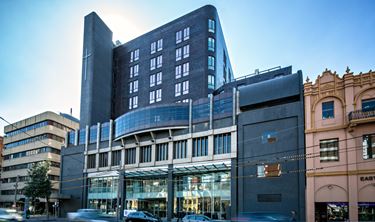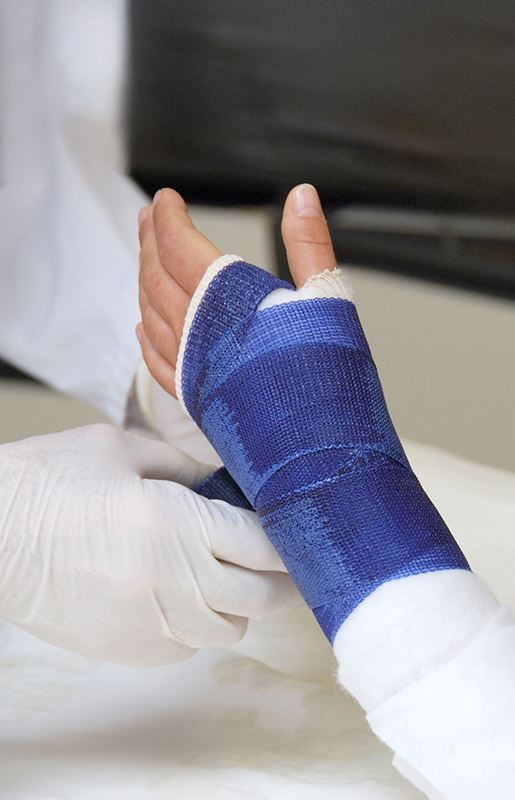Carpal Tunnel Release Surgery
- Home
- Services
- Orthopaedics
- Wrist Orthopaedics
- Carpal Tunnel Release Surgery
What is Carpal Tunnel release surgery?
Carpal tunnel release surgery is a common hand procedure that treats carpal tunnel syndrome, a progressive condition that can cause long-term damage if left untreated. The symptoms include pins and needles, tingling, pain, muscle weakness and numbness as a result of extra pressure placed on the main wrist nerve as it passes through the carpal tunnel. It can be caused by many different factors such as repetitive action, specific activities or certain health conditions such as arthritis.
Carpal tunnel release surgery works by cutting through the ligaments that form the ceiling of the tunnel. This increases the available space and reduces pressure on the underlying nerve – with immediate results. When the ligaments heal, they grow together more loosely which creates more room. Carpal tunnel release can be performed as open surgery, or as a minimally invasive procedure.
Symptoms of Carpal Tunnel Syndrome
Carpal tunnel can be caused by many different factors such as repetitive action, specific activities or certain health conditions such as arthritis. Carpal tunnel symptoms are caused by the extra pressure placed on the main wrist (median) nerve as it passes through the carpal tunnel. They tend to affect your thumb and fingers, but can affect both hands and may sometimes spread up your arm. Symptoms may be triggered by certain activities such as holding a book, or driving. They are often worse at night, and can include:
· Numbness
· Pins and needles
· Tingling
· Pain or burning sensation
· Muscle weakness

- Other wrist surgeries and procedures
Common wrist conditions
Carpal tunnel syndrome
When is Carpal Tunnel Bad Enough for Surgery?
Carpal tunnel syndrome does not always require surgery. In many cases, symptoms can be managed with non-invasive treatment such as wrist splints, position adjustments, rest, lifestyle changes and nerve exercises. Your doctor may also recommend steroid injections to help calm the symptoms.
However, if these treatments no longer work and your symptoms are severe enough to interfere with your daily activities, your doctor may recommend carpal tunnel release surgery as the most appropriate treatment pathway. In some cases, the operation for carpal tunnel is recommended to prevent irreversible muscle damage and waste caused by the ongoing numbness.
Early diagnosis and treatment are important in slowing down the onset of the condition. Left untreated, the wrist nerve will continue to get squashed against the carpal tunnel until it can no longer function properly. Talk to your doctor about your specific symptoms to understand whether carpal tunnel release surgery can benefit your condition.
Carpal Tunnel Release Surgery - Patient Journey
Carpal tunnel release surgery is a successful medical procedure to relieve pressure on the median nerve, treat the symptoms associated with carpal tunnel syndrome and restore wrist mobility and function. There are different types of surgery available, and your doctor will discuss with you the recommended pathway for your condition. We understand that any kind of medical procedure can be overwhelming, which is why we have multi-disciplinary teams on hand to support you at every stage. We are dedicated to providing a safe and comfortable patient experience at all times.
Deciding where to have your carpal tunnel release surgery is extremely important, and you should take some time to research your options carefully. Ask your doctor for some recommendations and use the opportunity to find out any relevant information such as how the surgery works, and the benefits and risks associated with the procedure. Look for hospitals that have strong expertise and experience in treating carpal tunnel syndrome and performing carpal tunnel release. Once you are happy with your decision, you can book a consultation appointment with your chosen specialist.
Your specialist will conduct a thorough medical examination and gather information about your general health as well as test your nerve to measure how well it is working. You may be required to have some extra imaging such as an X-Ray, MRI scan or ultrasound. All this information will help your doctor understand the severity of your carpal tunnel syndrome, whether any other parts of your body may be affected and the most appropriate treatment pathway. Your consultation can also be used to answer any questions you may have, such as what type of procedure will be performed, the benefits and risks of carpal tunnel surgery, and what you can expect your recovery to look like. Once your doctor has advised on a course of treatment, you can begin to prepare for your hospital admission and surgery.
Your doctor will talk to you about what you need to do to prepare for carpal tunnel release surgery. This may include taking or stopping any prescribed medications such as blood thinners. Preparing for you discharge in advance of the operation will help with your recovery. As your hand will be bandaged and in a splint after surgery, you will need to organise some transport home. You may want some help for a few days with meal preparation and daily tasks until you are feeling better – especially if both hands are affected. When you arrive at hospital, our team will make sure you are comfortable, and your hand orthopaedic specialist will visit you to answer any final questions.
On the day of your carpal tunnel release surgery, it is important to follow your surgeon’s fasting advice to prevent any delays to your procedure. Once at hospital, your anaesthetist will talk to you about the type of anaesthetic to be used and the procedure involved. You can read more about what to expect on the day of your carpal tunnel surgery. Carpal tunnel release surgery can be performed in different ways, and your surgeon will talk to you about what will happen during the procedure. The operation itself usually takes around 20 minutes. A small cut is made in the palm of your hand, and the ligament that forms the roof of the carpal tunnel is cut to release pressure on the nerve. After surgery, the symptoms are unlikely to return in most cases.
After surgery, you will be encouraged to keep your hand above your heart to help reduce the swelling. Moving your fingers around soon after the operation will help prevent any stiffness and will reduce the risk of scar tissue forming. Many patients find that the night-time symptoms improve dramatically in the first few weeks after carpal tunnel release. You can learn more about what to expect during your recovery in our carpal tunnel surgery recovery guide. Any pain after surgery can usually be managed with ice and pain relief medication. Patients are likely to be discharged the same day with a personalised rehabilitation program.
The rehabilitation program after carpal tunnel release will vary by patient and depend on the severity of the condition coming into the surgery. If the nerve has been compressed for some time, the recovery period will be significantly longer and the symptoms may not fully disappear. After surgery, you will need to wear a hand splint for a couple of weeks, and you will be encouraged to start hand therapy as soon as the carpal tunnel symptoms have subsided. By following your rehabilitation program and carpal tunnel exercises, any numbness and tingling should dissipate in the first few months and your gripping strength should return in 2-3 months. A full recovery could take up to 6 months but in more severe cases, normal sensation may not return for up to 12 months. Talk to your doctor about a safe return to work.
Carpal Tunnel Release Surgery FAQs
- Pins and needles, or tingling sensation
- Pain or numbness in the affected hand
- A burning sensation
- Weak grip
- Wasted muscles at the base of the thumb
Contact us today for a specialist consultation and to learn more about how you could benefit from surgery.
Find a hospital with orthopaedic services
Our Hospitals
Related services

Wrist Orthopaedics
We provide specialist care and expertise for a wide range of conditions that can affect the wrist.
Read More
Other Wrist Surgeries and Procedures
Options to relieve painful symptoms of common wrist conditions.
Read More
Common Wrist Conditions
The wrist is often on the front line and is vulnerable to common condition.
Read More
